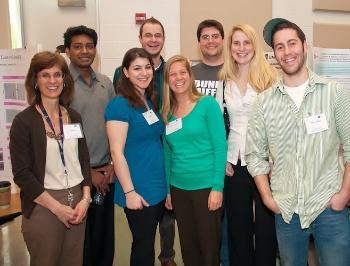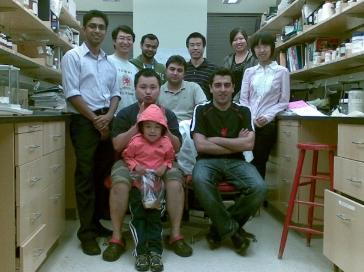Cranberries and Health
Cranberry fruit and products are the third most important export from the state of Massachusetts with a significant impact on the economy of Southeastern MA.
Consumption of cranberries and cranberry products such as juice, sauces, sweetened-dried fruits and supplements has grown substantially in recent years due to the established urinary health benefits and many other potential health-promoting effects including oral health, antioxidant, anti-aging, anti-microbial and protection against cancers and cardiovascular diseases.
Cranberries are closely related to other healthy fruits including lowbush blueberry (Vaccinium angustifolium), lingonberry (Vaccinium vitis-ideae) and bilberry (Vaccinium myrtillus). Consumption of these berries has been linked to improved cognitive function, cardiovascular health and night vision.
Potential health benefits
Consumer interest in cranberries has increased over the past decade due to its proposed health-promoting effects, giving cranberry the status of a "functional food". The most well-known application of cranberry and cranberry products is in the maintenance of urinary tract health. Compounds in cranberries and their metabolites can prevent the adhesion of E. coli bacteria, associated with urinary tract infections to the urinary tract wall. These properties may also prevent infection by bacteria associated with oral and periodontal diseases and stomach ulcers. Other potential health benefits include protection against certain cancers, cardiovascular diseases, pathogenic fungal infection, diabetes, and other disease states related to oxidative stress and inflammation such as Alzheimer’s disease, Parkinson’s disease and stroke. The health benefits of cranberry and other fruits have been a priority for major federal funding agencies including NIH and USDA.
What’s good for you in cranberries?
The health benefits of cranberry are associated with a diverse group of phytochemicals. Cranberries are rich in polyphenolics, including the deep red anthocyanins that give the berries their color and may play a role in reducing oxidative stress, and oligomeric proanthocyanidins (PACs) that have been associated with urinary tract and oral health benefits. The fruit also contains the natural anti-inflammatory ursolic acid, carotenoids such as lutein which may promote eye health, and the antioxidant quercetin which may be produced by the plant in defense against stress. These compounds reduce cell proliferation associated with certain cancers, scavenge free radicals that cause damage to biomolecules and tissues, and may fight microbial infections. Other potentially beneficial compounds in the cranberry plant are under investigation.
Research on Cranberries and Health at UMass Dartmouth
Neto Research Group:
 The research program of Catherine Neto focuses on the chemistry of biologically active compounds from the cranberry plant (Vaccinium macrocarpon), their anti-cancer, antioxidant and antimicrobial properties, and their potential roles as functional food factors in disease prevention and nutrition. A closely related topic is the development of cranberry secondary metabolites in response to stress. The Neto group has developed effective MS, HPLC and NMR analysis methods for cranberry extracts, and chromatography methods to isolate and characterize flavonoid and other phenolic constituents including oligomeric proanthocyanidins, and isoprenoid metabolites. Together with our collaborators, we investigate the ability of these compounds to inhibit human bacterial and fungal pathogens; their mechanisms of action against colon, breast and prostate cancer; neuroprotective and cardioprotective properties; and the dual roles of these metabolites in protection of both the consumer and the plant itself.
The research program of Catherine Neto focuses on the chemistry of biologically active compounds from the cranberry plant (Vaccinium macrocarpon), their anti-cancer, antioxidant and antimicrobial properties, and their potential roles as functional food factors in disease prevention and nutrition. A closely related topic is the development of cranberry secondary metabolites in response to stress. The Neto group has developed effective MS, HPLC and NMR analysis methods for cranberry extracts, and chromatography methods to isolate and characterize flavonoid and other phenolic constituents including oligomeric proanthocyanidins, and isoprenoid metabolites. Together with our collaborators, we investigate the ability of these compounds to inhibit human bacterial and fungal pathogens; their mechanisms of action against colon, breast and prostate cancer; neuroprotective and cardioprotective properties; and the dual roles of these metabolites in protection of both the consumer and the plant itself.
The Neto research group has active collaborations with scientists at UMass Dartmouth (Tracie Ferreira, bioengineering, mechanisms of cancer prevention; Maolin Guo, biochemistry, role of iron in antioxidant action; Frank Scarano, microbiology, inhibition of oral bacteria and pathogenic yeasts); UMass Amherst (Hang Xiao, food science, colon inflammation and cancer); the University of Prince Edward Island in Canada (Robert Hurta, cancer biology, prostate cancer; Marva Sweeney, biology, cardiovascular disease); Worcester Polytechnic Institute (Terri Camesano, chemical engineering, bacterial biofilm inhibition); Bruker-Biospin (Kim Colson, NMR-based metabolic fingerprinting); the UMass Cranberry Experiment Station (Frank Caruso, Erika Saalau-Rojas, plant pathology) and Cornell University (Lori Bystrom, cancer biology; Justine Vanden Heuvel, plant physiology). These projects have been funded by the USDA, NCCAM, the Cranberry Institute, the National Cancer Institute of Canada, Atlantic Canada Opportunities Agency, Bruker Biospin and UMass Dartmouth.
Guo Research Group:
 The research program of Maolin Guo is in the interface between chemistry, biology and medicine. The Guo lab uses a multidisciplinary approach to investigate the molecular basis of cranberry (Vaccinium macrocarpon) in modulating metal ion homeostasis, oxidative stress and its related neurological disorders, cancer, diabetes, and infectious diseases. The research goal is not only to study the mechanisms of action, but also to develop novel technology for research, diagnosis or therapy. Guo lab research involves chemical synthesis of functional molecules, specific tagging of proteins and natural products, cloning, expression and engineering of novel target proteins and enzymes, enzymatic assays, spectroscopy, x-ray crystallography, bacterial and mammalian cell cultures and fluorescent confocal imaging of live cells.
The research program of Maolin Guo is in the interface between chemistry, biology and medicine. The Guo lab uses a multidisciplinary approach to investigate the molecular basis of cranberry (Vaccinium macrocarpon) in modulating metal ion homeostasis, oxidative stress and its related neurological disorders, cancer, diabetes, and infectious diseases. The research goal is not only to study the mechanisms of action, but also to develop novel technology for research, diagnosis or therapy. Guo lab research involves chemical synthesis of functional molecules, specific tagging of proteins and natural products, cloning, expression and engineering of novel target proteins and enzymes, enzymatic assays, spectroscopy, x-ray crystallography, bacterial and mammalian cell cultures and fluorescent confocal imaging of live cells.
The Guo research group has proposed that modulating of iron homeostasis plays a vital role in the bioactivities of cranberry polyphenols and related compounds in other herbal medicine. The Guo group has developed molecular probes capable of real-time imaging metal ions, free radicals and polyphenols in live cells. By using these novel tools, Guo lab investigates how these compounds entering cells and the mechanisms of their anti-bacterial, anti-oxidant, anti-diabetic, anti-aging, anti-cancer, neuroprotective and cardioprotective properties at cellular and molecular levels.
The Guo research group collaborates with researchers from both academia and industry (including but not limited to): Dr. Cathy Neto (cranberry phytochemistry, UMass Dartmouth), Dr. John Keaney, cardiovascular medicine, UMass Medical School), Dr. Gang Han (pharmacology and bioimaging, UMass Medical School), Dr. Wei Chao (cardiovascular diseases, Harvard Medical School/Mass General Hospital), Dr. David Lee (natural products, Harvard Medical School/McLean Hospital), Dr. Terri Camesano (bacterial biofilm inhibition, Worcester Polytechnic Institute), Dr. Boxin Ou (natural products and oxidative stress, Brunswick Laboratories Inc.), Dr. Lori Bystrom (natural products and cancer, Weil Cornell Medical College), Dr. Michael Brownlee (diabetes, Albert Einstein College of Medicine), and Dr. John Lemasters (ischemia reperfusion, Medical University of South Carolina). Guo lab research has been funded by the NIH/NCCAM, National Parkinson Foundation, the American Parkinson Disease Association, UMass Science & Technology Initiative, UMass Cranberry Research Program and UMass Dartmouth.
